Capital of the Venusian Colony Union (use of inter-colony transport)
110,000 inhabitants, 145 modules, 870,000t, 11km long
Earth date: 1:55 a.m. Wednesday January 17, 2142
Venusian date: 10:38 Croday 45 advanae 61
Location: atmosphere of Venus, 55km above the surface, Atmospheric coordinate 0 ° N 0 ° E (Vesta serves as a reference)
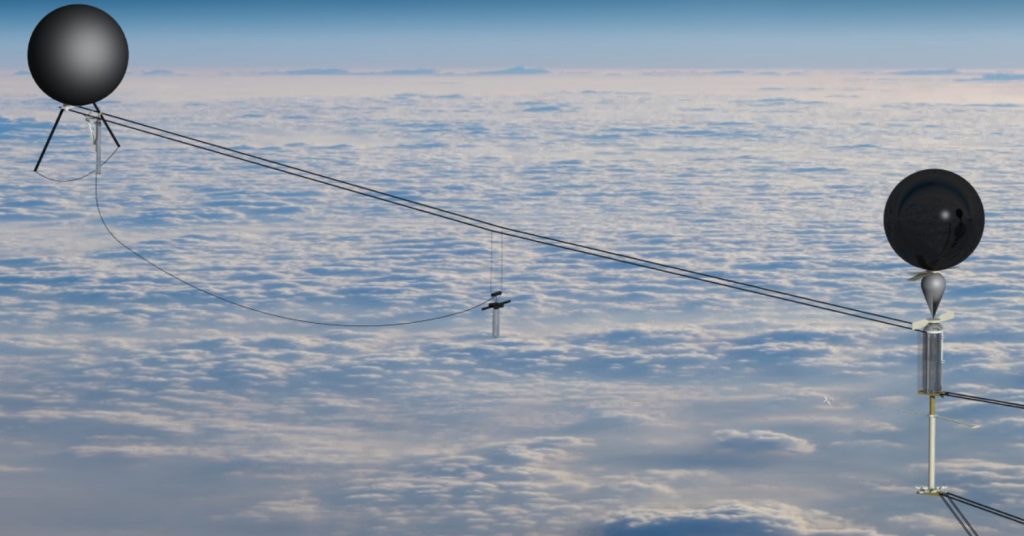
Spaceport: space vehicle launch and recovery set
While dread has still not subsided in the ship, the rising arms allow the starship to be grabbed by a wagon dubbed the “gripper.” Once stabilized, this clamp slides along the cables towards the base located against the bottom. During this slide, flight attendants begin to stand up and slowly move with uncertain steps towards people who are unwell with the Venusian gravity that keeps you in your seat.
After two minutes, you approach the spaceport. The top of this building is a dome above a rotating transparent tube, inside of which you could see other starship resting on their super heavy. Moreover, an opening in the tube in front of you lets appear a super heavy under an empty space intended for your starship. Once docked inside the tube, the clamp will come off and move back, then you could hear the sound of the doors closing outside and the air circulating which removes the sulfuric acid which, in the long run, could attack some people. component of the vessel. The access hatch opens and medical teams come close to those suffering from the effects of gravity allowing the stewards, also weakened by their 5 months of travel, to return to rest in their seats. One by one, each passage left the ship on its seat thanks to the rails on which they are placed. You were led into the dome overlooking the spaceport from which you can see the entire launch system while you regain your strength.
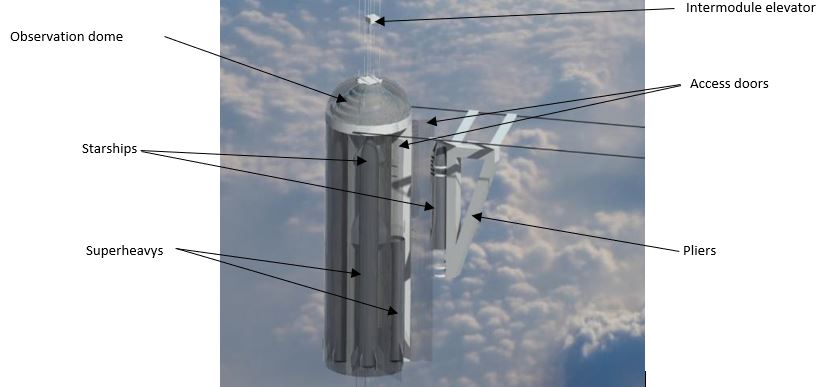
After a few minutes you will notice that your initially very reclined seat has started to rise and when the backrest is almost straight, a medical team comes to see you. Thanks to the medical sensor integrated into the suits, they know that you have endured the trip and suggest you get up. By grabbing you under the arms, it pulls you up and holds you back when you feel dizzy. The artificial gravity of Bifröst allowed you to maintain a sense of balance, but it was 3 times weaker than that of Venus. This has got your heart used to pumping less hard to fuel your brain. Fortunately 5 months is too short a time to have atrophy of the heart muscle and a simple increase in the rhythm allows you to return to your normal state. The first steps are as heavy as the first ones in the Bifröst you seemed light. When you are confident enough, the medical team will start to let go and lead you to a railing. You are advised to remain standing or lean against a wall as long as possible and then leave you to pick up another person.
In the midst of the visibly exhausted Bifröst passengers, fit people arrive in the dome of the spaceport. They are passengers on the next flight to huricancity, a small colony on the edge of the North Pole Cyclone of Venus. A small squeak indicates that the bottom of the spaceport is spinning to place their starship in front of the door. Once all passengers have boarded the doors open and the clip grips the starship and its superheavy. As the assembly has been sliding on the cables for a minute, it passes over a small propellant production facility recognizable by the large acid collecting wings and its imposing reservoir. At this point, the hose, commonly called the umbilical, which connects this installation to the transport clamp begins to undulate, indicating that it is being filled. Arrived a few hundred yards in front of the trapeze ball, the clamp stops, the umbilical relaxes and the thrower prepares. Suddenly the 36 motors of the superheavy light up in a powerful burst of light as the clamp lets go and pulls back. It takes 6 seconds for the sound of take-off to reach the spaceport, which begins to vibrate.
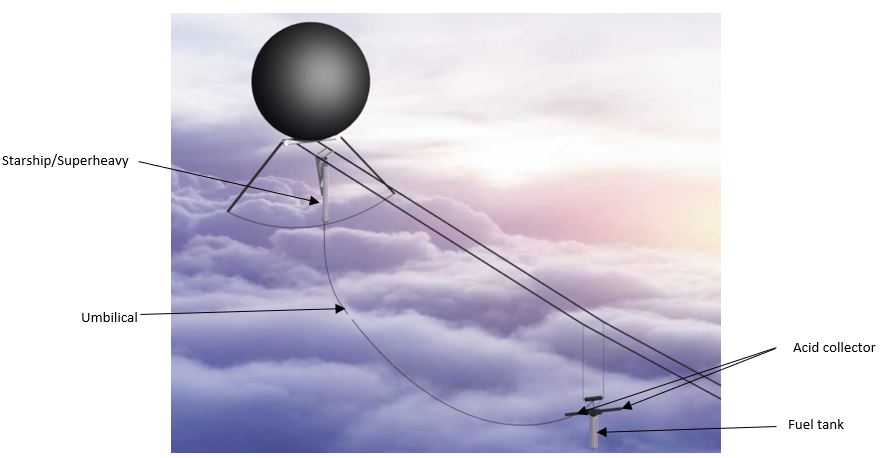
As the Starship disappears into the clouds, a group of people approach you. You had already met them on the Bifröst and you had agreed to meet to go together to the Babakine colony which is your common destination. It is led by Anna, a celebrity in space exploration who has lived on Venus for over 30 years. She took the Bifröst to return home after a 15-month stay on Earth, lectured and taught at universities. Once the rest of the group is collected, you board the elevator that takes you to the airport. This is when you can see the Superheavy that just took off land on the trapeze as you did shortly before.
Airport: inter-colony passenger transport infrastructure
Babakine, your final destination, is a settlement located 2000km west of Vesta where you are. Even though the two bases are constantly rotating around the equator, riding the same winds and therefore staying at the same distance all the time. Due to the proximity of the two bases, the use of a starship for a suborbital flight is not necessary. You will therefore reach your destination by Venusian plane and your elevator dives elsewhere into a tube and has just stopped in the airport which has nothing to do with its terrestrial counterparts
Through the windows of the departure lounge you enter, you see planes around and above this lounge. Due to the lack of oxygen in the atmosphere, Earth’s reactors and turbines do not work on Venus. It therefore runs on hydrogen, which reacts with atmospheric CO2 to produce the electricity needed to propel the device. The huge hydrogen tanks placed under the wings are one of the first things you see on Venusian transport planes. With the dwindling oil reserves on Earth, electric regional planes have developed, so you’ve become accustomed to the rest of the aircraft’s design with its linear thrusters located under the wings.
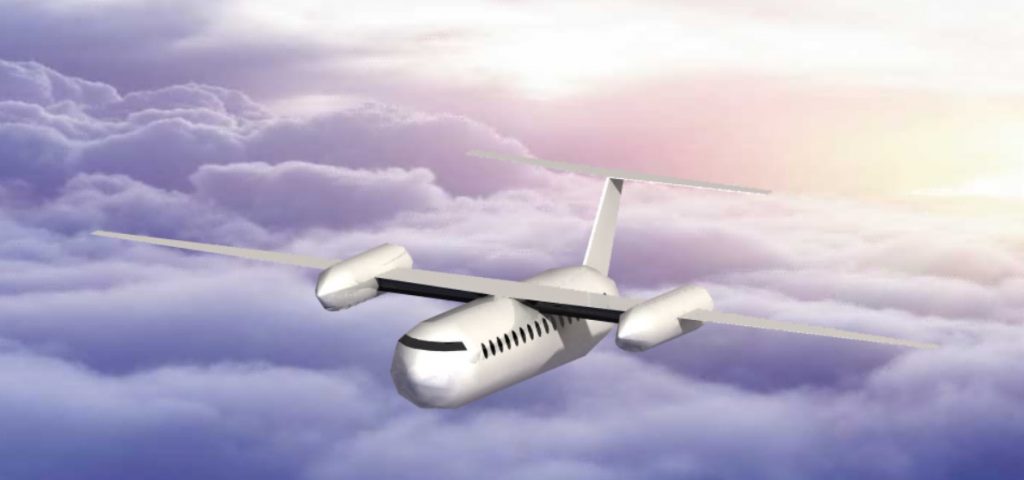
Since most of the passengers on your plane have arrived from Bifröst like you, the plane is already waiting for you and you get on board immediately. The interior is very similar to land planes and after you buckle up you are entitled to the usual safety messages. On Venus, there is nothing for an emergency landing, and an aircraft unable to reach a colony will eventually be destroyed by the extreme conditions of the lower atmosphere. In case of difficulty, you will have to evacuate the device by jumping through an emergency exit and triggering the inflation system of a helium balloon integrated in your suit. This balloon will allow you to float in a liveable layer of the atmosphere while the emergency services come for you. As this aircraft is used daily for inter-colony flights, most passengers are not in coveralls like for a starship flight. For them, a pack with helium balloon, oxygen and a loose suit is placed under each seat.
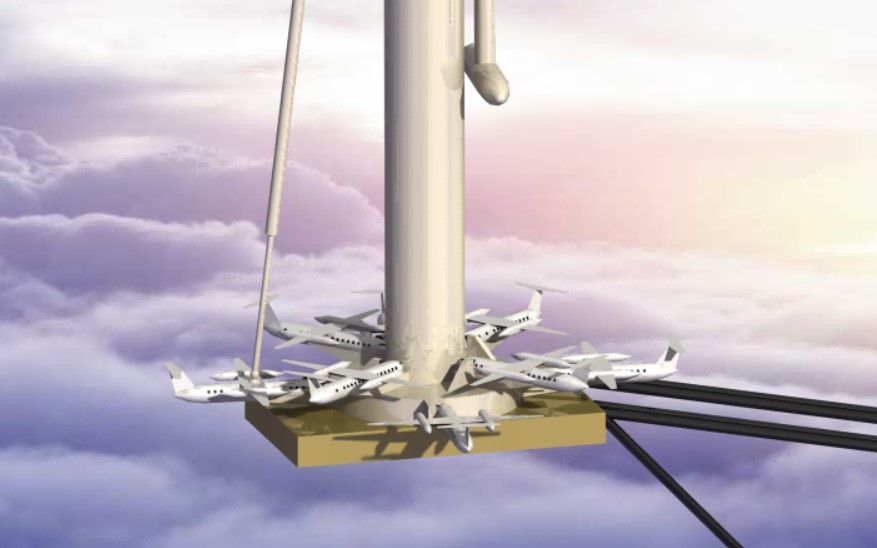
Once all the passengers are strapped in, the take-off procedure can begin and again, due to the lack of a solid surface to create a runway, this is very different from what is done on land. A telescopic crane begins to grab your plane, pull it out of its location and pull it away from the airport center tube. You barely hear the engines cranking and feel an acceleration press against your backrest and then pull you down. It is the centrifugal force which is due to the 250m long crane to which you were attached which has started to rotate and is turning faster and faster. When the crane is nearly level, the speed your plane has acquired is equivalent to the take-off speed it would have had a plane at the end of a take-off runway on Earth. This is when the crane lets go of you, abruptly decreasing the gravity you feel and switching you to normal flight.
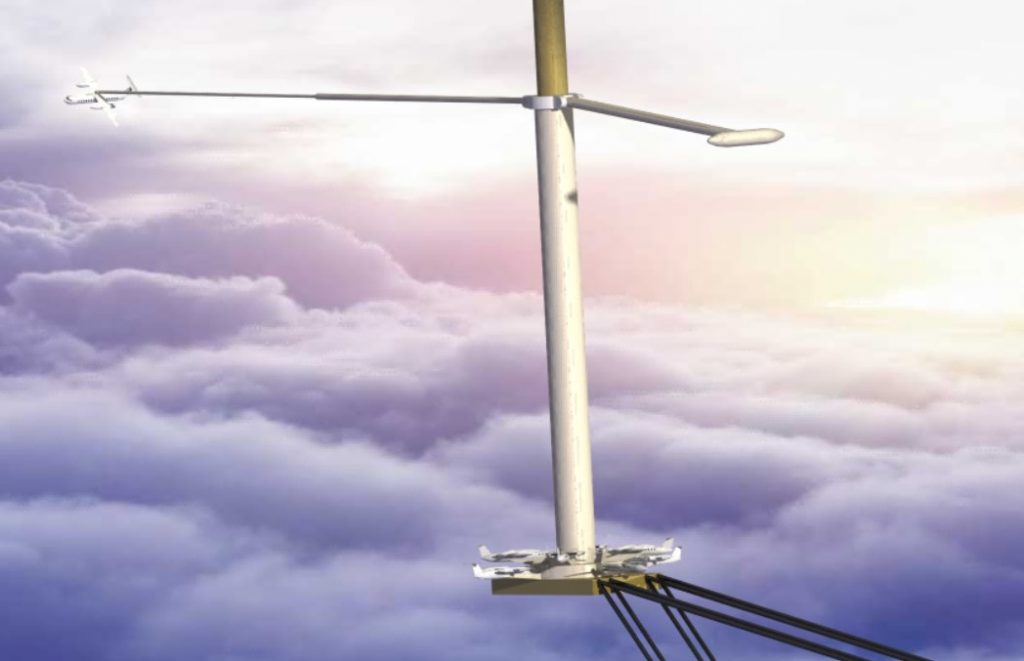
Port: inter-colony freight transport infrastructure
During the initial turn, you can see the module located under the airport. Since everything is aerial on Venus, it is also an airport but dedicated to cargo. So everyone tends to call port to differentiate it from the plane airport you just left. Although equipment is sometimes transported by starship into space, or by air for rapid inter-colony transfer, the bulk of the cargo travels by airship. Even though the massive solar panels covering them indicate that they have electric propulsion, it’s airship also moves using the difference in wind speed as a function of altitude. These 150m long machines would be complex to dock at the port. He is therefore content to stay nearby and wait for a drone to bring the cables that will allow the transfer of goods and maintenance personnel. This configuration with a multitude of airships in free flight around a central structure gives the port an octopus appearance.
